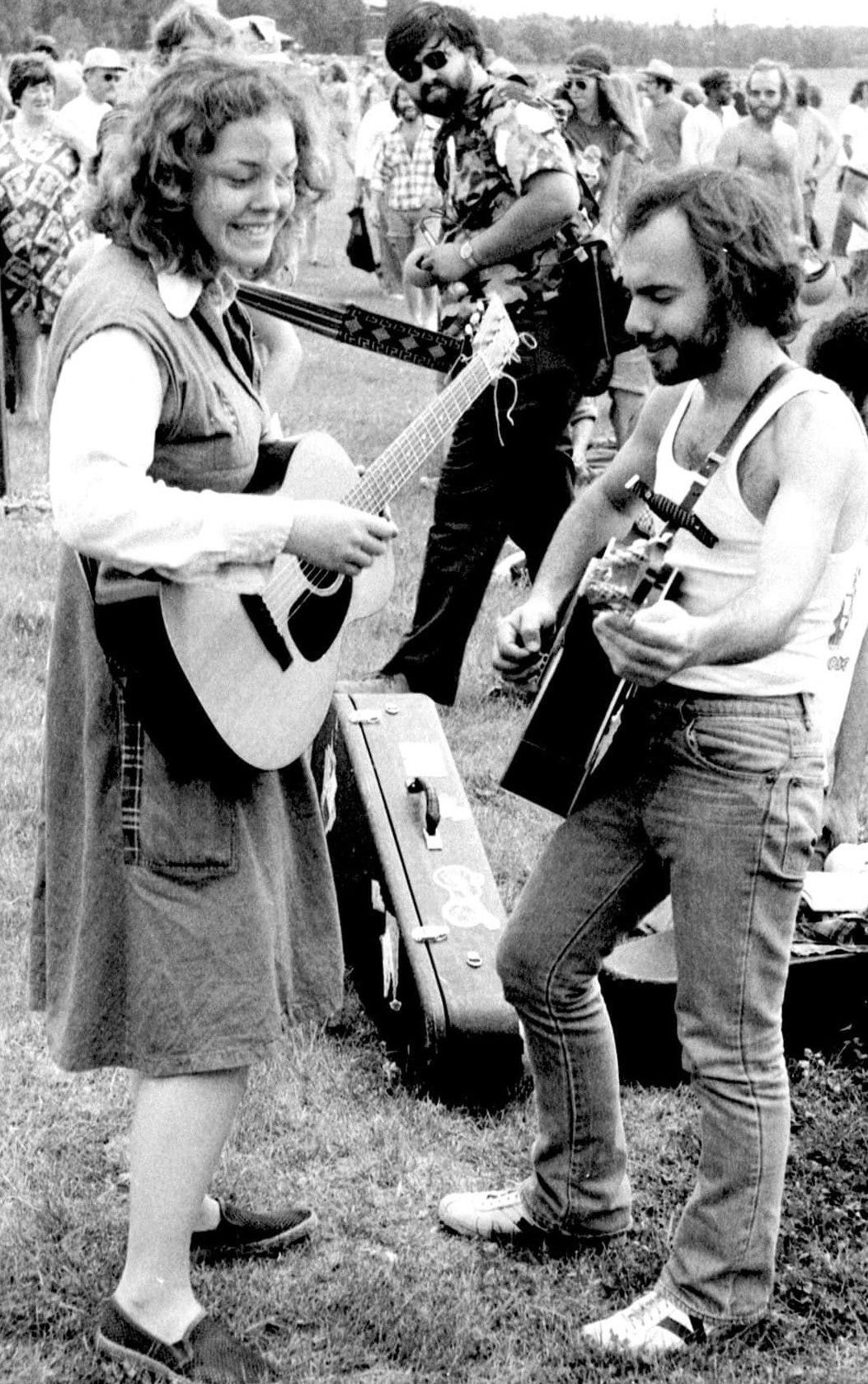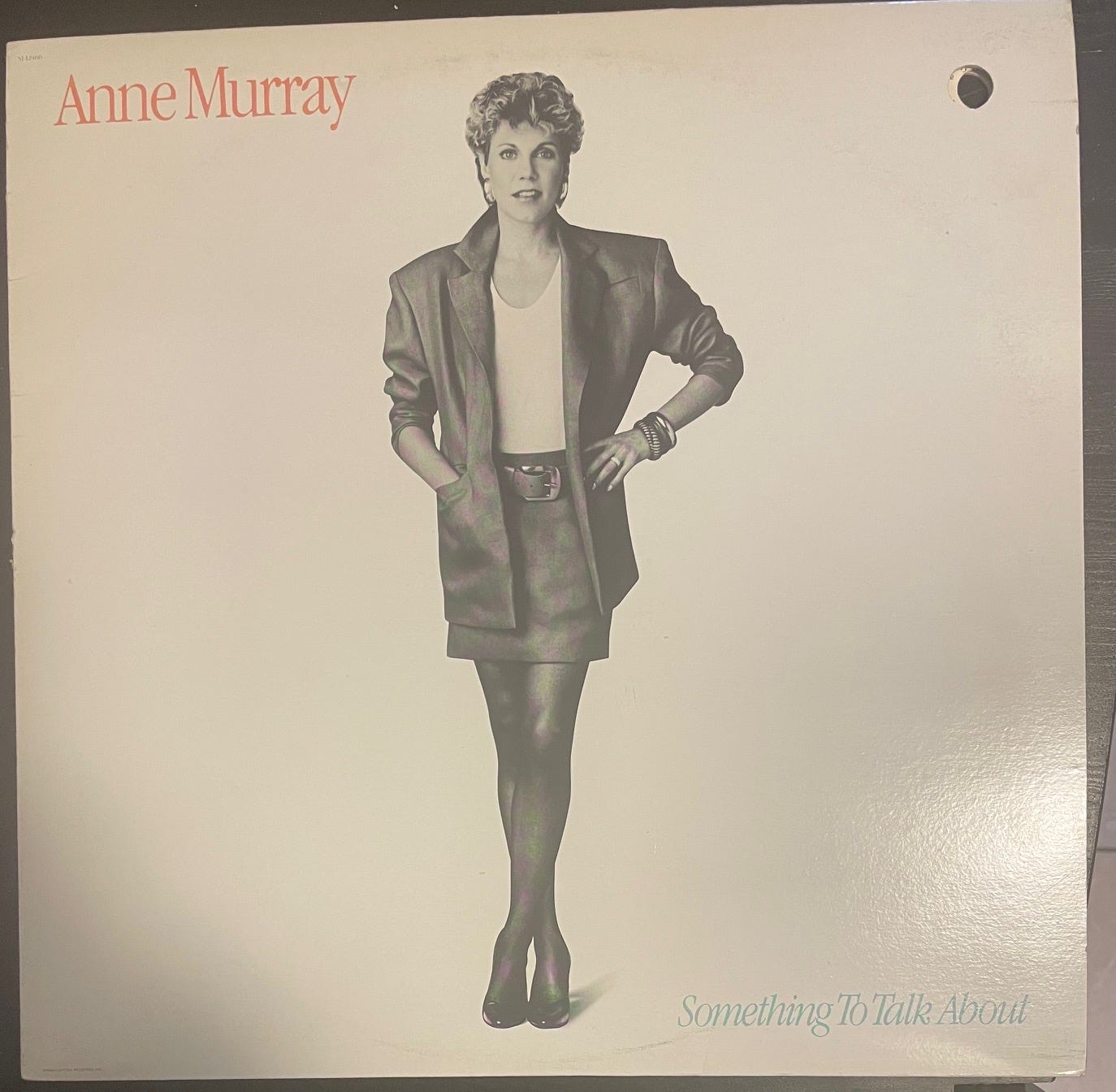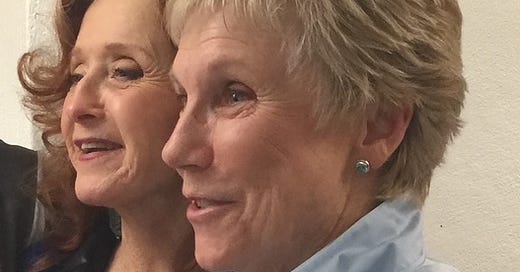Stories from the Edge of Music #51: THREE SINGERS, ONE HUGE HIT SONG
Shirley Eikhard wrote it, Anne Murray’s producers turned it down, and “Something to Talk About” was Bonnie Raitt’s breakthrough hit

IN SEVERAL MINI-CHAPTERS, THE STORY OF A SONG
Back in 1982 — how is that more than 40 years ago? — I was organizing a series of seminars across the country on behalf of CAPAC1, one of the two performing rights organizations in Canada at the time. The theme of the events was “How to make and sell your own record,” presaging the current boom of independent music making and marketing.
For the Toronto version of the seminar, I recruited songwriter Hal David, then-president of ASCAP2, as the keynote speaker. (One of the most prolific song lyricists, David is remembered for writing, with Burt Bacharach, Dionne Warwick’s catalogue of major hits.)
I didn’t know Shirley Eikhard very well, although she had written most of four albums by then — but I thought it would be nice, at the dinner for the seminar participants, to sit her next to David.
It was a fateful meeting. “Hal asked how I write songs,” she told me later. “I said I waited for an idea, for inspiration, and then wrote.
“And he told me that that was the wrong way to do it. He said that songwriting was similar to a muscle — you had to use it every day, otherwise it wouldn’t work well. And I’ve followed that advice ever since.”
+++++++++++++++++++++
A high school kid gets her first taste of a hit
At 13, Shirley’s career began when she successfully auditioned for the Songwriter’s Workshop at the 1969 Mariposa Folk Festival — she played onstage alongside Joni Mitchell, Ian & Sylvia, and Bruce Cockburn.
Two years later, Shirley was still in high school in 1971 when Anne Murray — yet to be the national icon she became in Canada — recorded “It Takes Time.” The song, which Shirley had written when she was 12, was a modest hit from Murray’s fourth album — and Anne never forgot the writer’s talent. The song was also featured on Kim Carnes’s debut album that same year. And in turn it led to a less than perfect publishing deal; pressured by her parents, Shirley signed it. “Although,” she told me years later, “even at 15 I knew it wasn’t right.”
Anne Murray wasn’t a songwriter, though she was blessed with a distinctive, husky, intimate voice and a style that always respected the melody and the lyrics of the songs she performed. So, when she had success with a writer’s song, she would listen to any song that writer sent her; lightning could strike again.
+++++++++++++++++++++
Stage fright? No, how about stage terror?
In the early ’80s, Shirley had finally come to terms with a couple of facts. First, she was seriously allergic to cigarette smoke, which made it difficult to sing in bars and clubs (this was a time, of course, long before smokers were banished outdoors to damage their health there).
Second, she simply did not like performing. A friend told me, “She doesn’t have stage fright. She has stage terror.” When I was working with her I helped find her some festival gigs — I remember how guilty I felt when I watched her on stage at Summerfolk, the folk festival in Owen Sound, Ontario.
Worse, her discomfort expressed itself in her between-song banter, which sounded, to quote a friend, “ditzy and uncoordinated.” Alas, audiences found this charming and refreshing, which made it even worse for the singer.
But that was all about to change.
+++++++++++++++++++++

How the big hit was written
In January 1985, Shirley swapped apartments with her friend Colleen Peterson, who had a lovely apartment on Music Row in Nashville. The living room had a giant photograph over the fireplace of a Toronto streetcar rumbling through a snowstorm, a reminder of what Shirley had just escaped.
In four weeks, perhaps with Hal David’s advice in mind, she wrote 14 songs, cut some demos, and became a familiar face in music publishers’ offices up and down the street.
In an article she wrote years later: “On Sunday February 3, around 11 o’clock at night, Colleen’s cat was keeping me company in the kitchen, lying on the table, purring.
“I sat down with my guitar and started vamping on an A-chord. Out of nowhere, the opening lines, ‘People love talkin’, talkin’ ’bout people, I hear them whisper, you won’t believe it’ popped out and it begged the obvious question: what are they talking about? I let my imagination fly and within 20 minutes, the song was finished. This was the only time in my whole career that I knew instinctively I had written a smash!”
The next morning, she looked at the song again, changed two words, figured out an arrangement, and rushed out to make the demo. “It came clear that the song was way more country than I’d envisioned it the night before,” she said — and sent a cassette of the demo to Leonard Rambeau, Anne Murray’s manager.
Two days later, he got back: Anne loved the song, and was planning to sing it at her concerts and record it. Anne, as well as Shirley, could recognize a hit when she heard one.
However, when Anne’s next album came out a year later, the song wasn’t on it — her producers thought the song was “too country.” Anne was changing her musical direction from her “country-ish” style to a more inclusive, middle-of-the-road adult contemporary approach.
But the album, with cover photographs of the singer wearing more sophisticated sweet clothing — not a hay bale in sight — had an apt title.
You guessed it: Something to Talk About.
+++++++++++++++++++
Finally, six years later, Bonnie records the song
Getting a song to a recording artist often takes the efforts of a small army of publishers, friends, and even other artists. The folk who talked about “Something to Talk About” helped, directly and indirectly, get the song to Bonnie Raitt; they included long-time friend Lynn Jacobs, singers Alannah Myles, Julie Gold and Amy Sky, well-known artist manager Danny Goldberg and Nashville publisher Jody Williams.
On January 16, 1991, Bonnie called Shirley at home — to the songwriter’s stunned surprise — to say she had recorded the song; she played it over the phone. The tempo was slower, the slide guitar unmistakably bluesy — it sounded like the hit Shirley had felt it would be when she wrote it six years earlier.
It was the last song recorded for Luck of the Draw, Bonnie’s second multi-platinum record in a row.
Released in June 1991, it was the first single. It was a massive hit — the album sold seven million copies. And Bonnie still sings it in her shows more than 30 years later.
Patience, they say, is a virtue.
+++++++++++++++++++++
Some quick postscripts to this long story
The day the song hit the charts, Anne Murray sent Shirley a bouquet of red roses.
Once the song became popular, and once the royalties to the writer started to arrive, Shirley never played in public again.
There was one exception — Bonnie asked Shirley to sing the hit as a duet with her, at a concert in London, Ontario. She did, and a day later I asked Shirley how it had gone. Her laconic answer: “Well, okay, I guess…”
Sadly, Shirley died in 2022, yet another breast cancer victim. Her long-time partner, Catherine, had died one year earlier.
This writer worked with Shirley briefly, but our friendship remained — usually maintained by long phone conversations, which she said always made her laugh.
+++++++++++++++++++++++++++++++++++++++++++++++++++++++
A MOVIE RECOMMENDATION
The best woman slide guitar player? I’ll bet you immediately came up with Bonnie Raitt — but, having known Bonnie for almost 50 years, I know she’d probably come up with a different name: Ellen McIlwaine.
Ellen had a wonderful background: born in Nashville, raised in Japan, playing New York joints with Jimi Hendrix, and finally moving to Canada. Now, much better late than never (Ellen died in 2021), there’s a film about her, Goddess of Slide. It’s playing in Toronto at the Hot Docs cinema on Sunday March 9 at 12.30 p.m. OK, I’m gonna shout now: DON’T MISS THIS!!!
And, hopefully, it’ll get shown in lots of other cities too. Here’s the trailer for it:
+++++++++++++++++++++++++++++++++++++++++++++++++++++++
A FINAL NOTE
Sometimes writing these stories is easy. And sometimes it’s hard — for some unknown reason. This one was a bit like pulling teeth, although I hope it doesn’t read like that!
So here’s the reminder: Nothing behind a pay wall, reasonably regular posts, and the $6 a month from my 100 paid subscribers is so much appreciated. Would you consider joining them, and — if you have a free subscription — upgrading?
CAPAC: the acronym of the Composers, Authors and Publishers Association of Canada.
ASCAP is the American Society of Composers, Authors and Publishers. Both it and CAPAC (now SOCAN), as performing rights societies, collect licence fees under copyright law, from organizations that use music — radio and television stations, theatres, concert halls, night clubs, etc. They then distribute the income to the songwriters and publishing companies who created and own the music that’s performed in public. (This is more than enough educational material for one issue of Stories!)





Such a lovely insightful story.
I was on the crew at Summerfolk when Shirley Eikhardt played. I went to give her a 5 minute call at the warm up trailer and as she stood up I saw that she had sat on a large sea gull dropping. As I brought her to the stage one of the women on the crew had seen what happened and handed Shirley the jeans she had just taken off. Shirley went on and played. She thanked the crew for their help including the wardrobe change. It’s the stuff that made festivals great before everyone toured with their own production equipment.